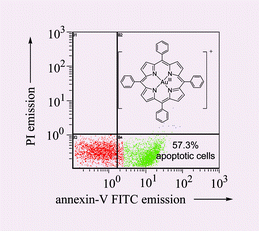Gold(iii) porphyrins as a new class of anticancer drugs: cytotoxicity, DNA binding and induction of apoptosis in human cervix epitheloid cancer cells†
Abstract
A series of gold(III) tetraarylporphyrins are stable in the presence of

- This article is part of the themed collection: ChemComm contributions to the United Nations Sustainable Development Goals

 Please wait while we load your content...
Please wait while we load your content...